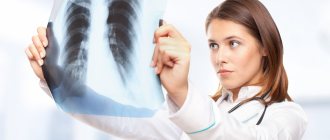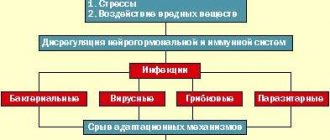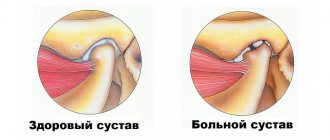Heaviness in the legs is a familiar feeling to many people, regardless of gender, age and type of activity. Heaviness in the legs is a subjective characteristic of such manifestations as: discomfort and a feeling of heaviness in the legs, a feeling of fullness and nagging pain in the calf muscles, swelling.
This feeling may be experienced by:
- children and young people who are in a period of active growth of the musculoskeletal system,
- elderly people and old people,
- athletes after long training sessions,
- pregnant women,
- overweight people.
Very often, heaviness in the legs bothers people whose profession involves heavy physical exertion and heavy lifting, staying in one position for a long time, sitting or standing, for example, office workers, doctors, teachers, drivers, and so on.
Heaviness in the legs can be a transient condition: the discomfort disappears after a night's rest, massaging the legs, a contrast shower, a short stay in the “legs above the body” position, or permanent. Regular complaints of heaviness in the legs are an “alarm bell” signaling problem veins and a serious reason to consult a phlebologist. Diagnosis of venous insufficiency at an early stage, individually selected therapy, carried out under the supervision of a specialist, is the only way to avoid further development of varicose veins.
Causes of heavy legs
Physiological factors
Slight heaviness in the legs is normal during physical activity. After long walks, you feel bursting pain in your feet and legs, sometimes there is a tingling sensation and a crawling sensation. To relieve discomfort, a person lies down and elevates his legs. The next day, the heaviness disappears, but slight stiffness of movement and muscle soreness when walking are possible.
Varicose veins
It is the most common cause of heaviness in the limbs. Complaints appear in the late afternoon, especially if the patient has been on his feet all day. The calf muscles feel fullness, burning, and soreness. Unpleasant symptoms decrease or completely disappear with an elevated position of the limbs. At the decompensated stage of varicose veins, patients constantly experience heaviness in their legs, which does not depend on body position or time of day.
Symptoms are accompanied by excruciating pain in the legs, which worsens while walking. The legs become very swollen, the skin becomes pale or bluish. The dilated veins on the shins are well contoured. Later, trophic disorders occur: the skin becomes dry and flaky, hyperpigmentation develops, rashes and ulcers form.
Postthrombophlebitic syndrome
Symptoms appear several months after deep vein thrombosis. The patient is bothered by heaviness and bursting pain in the affected leg, which intensifies when standing and walking. If the limb is in an elevated position, the painful sensations disappear. There are painful cramps at night. With a long course of postthrombophlebitis syndrome, patients experience constant heaviness and pain, and weeping ulcers form due to poor circulation.
Heart failure
Dysfunction of the right ventricle and stagnation in the systemic circulation is manifested by constant swelling of the legs, which leads to a feeling of heaviness. Symptoms appear in the afternoon: the legs become full, the shoes begin to press, and bursting pain appears in the feet and legs. Discomfort reaches its maximum intensity in the evening, and after a night's sleep, when blood flows from the lower extremities, the patient's well-being improves.
Heavy legs
Lymphedema
If lymph circulation is impaired, the severity is combined with severe swelling of the entire lower limb. With congenital lymphedema, discomfort first affects the foot and lower leg, then moves higher. Acquired forms of pathology are characterized by heaviness and swelling in the thigh area, followed by downward spread. The skin becomes tense, and when pressure is applied to the soft tissue, a hole is formed that does not straighten out for a long time.
Flat feet
Discomfort and heaviness in the feet occur after a long walk, when wearing uncomfortable and incorrectly selected shoes. Patients complain of aching or sharp pain in the arch of the foot, heaviness and tension in the lower leg muscles. With severe flat feet, severe pain is disturbing even with static load. Bone deformities appear - flatfoot, hammertoes.
Rare causes
- Congenital pathologies of the venous system
: Klippel-Trenaunay syndrome, Parks-Weber-Rubashov syndrome. - Spinal diseases
: lumbosacral osteochondrosis, spondylolisthesis. - Kidney diseases
: acute and chronic glomerulonephritis, chronic renal failure, diabetic glomerulosclerosis.
Daily overload
A load that exceeds the physiological load for a long time inevitably leads to weakness in the legs.
This is primarily excess weight, when the joints and muscles of the lower extremities bear excessive load for a number of years. Obesity destroys bones, muscles and ligaments very slowly, and it seems to go unnoticed. But if you compare the physical capabilities of people with normal weight and obesity, the comparison will not be in favor of the latter. The third trimester of pregnancy is a test for a woman’s musculoskeletal system, when she is forced to adapt to her growing body weight. Lymphostasis or elephantiasis is another reason for the increased load on the legs.
Diagnostics
Considering that most cases of heaviness in the legs are associated with venous circulation disorders, an examination by a phlebologist is necessary. Often, a preliminary diagnosis is made during an objective examination, when varicose veins, edema, hyperpigmentation, and other typical manifestations are detected. To clarify the diagnosis and identify other etiological factors causing heaviness in the limbs, the following is carried out:
- Doppler ultrasound of veins
Duplex scanning of vessels is used to study the anatomical structure of the venous bed, assess the tone and function of the valves. Chronic venous insufficiency is manifested by slow blood flow, pathological blood reflux, and phlebothrombosis. - Rheovasography of the lower extremities.
A modern diagnostic method that shows even minor changes in hemodynamics and microcirculation. Based on the results of the study, the doctor gives an opinion on the condition of the peripheral veins during stress tests and at rest. Sometimes venography is prescribed for additional examination of blood vessels. - Lymphangiography.
Visualization of lymphatic vessels using a contrast agent is required to determine their patency and the functioning of the valve apparatus. The difference in diameter in different parts of the vessels and uneven contrast indicate pathology. For dynamic assessment of lymph circulation, lymphoscintigraphy is indicated. - X-ray of the foot.
If flat feet are suspected, an orthopedic traumatologist joins the diagnostic search. Based on X-ray images, the doctor measures the height of the arches and pathological angles between bone structures, establishes the type and severity of the disease. The diagnosis is clarified using plantography. - Additional research
. To diagnose osteochondrosis, which causes heaviness in the legs, an x-ray or computed tomography scan of the spine is performed. To confirm cardiac diseases, ECG, echocardiography, and chest X-ray are recommended. Survey and excretory urography are informative for excluding renal causes of edema.
Phlebologist consultation
Intoxication
Any poisoning or infection causes general poisoning of the body and failures in many systems. Even a common ARVI, not to mention a bacterial infection, is accompanied by general weakness. Sunstroke, harmful working conditions, stale food - everything can lead to weakness, and each reason needs to be dealt with. In many cases, long-term alcoholism is destructive to nerves and muscles.
CELT doctors, who have unique practical experience, will help to accurately determine the cause of the disease.
Make an appointment through the application or by calling +7 +7 We work every day:
- Monday—Friday: 8.00—20.00
- Saturday: 8.00–18.00
- Sunday is a day off
The nearest metro and MCC stations to the clinic:
- Highway of Enthusiasts or Perovo
- Partisan
- Enthusiast Highway
Driving directions
Treatment
Help before diagnosis
To get rid of heaviness in the legs, patients are advised to choose comfortable shoes and use orthopedic insoles. If you need to spend the whole day in a standing position (hairdressers, salespeople, cooks), you need to wear compression stockings that help reduce venous stagnation. It is necessary to maintain body weight within normal limits so as not to create additional stress on the feet.
To improve peripheral blood circulation and increase the tone of venous vessels, exercise (swimming, cycling) is useful. The amount of strength and static training, which increases the deposition of blood in the veins, should be reduced. Lifestyle changes play an important role: increasing daily activity, frequent walking.
Conservative therapy
Treatment of vein diseases in clinical phlebology begins with medications: taking antiplatelet agents, phlebotonics, applying ointments and creams to areas of the skin with trophic lesions. B vitamins and desensitizing drugs are indicated as general tonic agents. In rare cases, the treatment regimen is enhanced with corticosteroid hormones.
Therapy is supplemented with elastic compression (bandages, stockings) to maintain venous vessels in tone and reduce heaviness in the legs. For the treatment of varicose veins, compression sclerotherapy is widely practiced - the injection of drugs into the veins that cause gluing of the vascular walls and reduce venous stagnation. After the manipulation, pain and swelling of the legs are eliminated.
To reduce edema in cardiac and renal pathologies, diuretics are used. With constant use of the medicine, excess fluid is removed, shortness of breath and heaviness in the legs are eliminated. For heart failure, beta blockers, glycosides and other drugs are additionally prescribed to improve the strength of myocardial contractions.
Surgery
For varicose veins, several types of surgical interventions are performed:
- minimally invasive (photocoagulation, laser removal of spider veins, radiofrequency coagulation);
- classical (phlebectomy, Troyanov-Tredelenburg operation).
For patients with lymphedema, lymphovenous shunting, tunneling, and autotransplantation of the tissue lymphoid complex are recommended.
Flat feet are treated by experienced orthopedic traumatologists. In the stage of planovalgus foot, resection of protruding areas of bones, tendon transplantation, and removal of heel spurs are performed. For patients with severe transverse flatfoot, resection of hallux valgus followed by plastic surgery of the articular capsule is indicated.
Frequent cases
Varicose veins of the legs
It is not always possible to find the peculiar asterisks, meshwork and swollen vessels characteristic of varicose veins on the front legs. Moreover, not only the left or right shin can be affected by this disease, but both at the same time. The absence of external signs eliminates the possibility of quickly determining the presence of this disease.
Characteristic symptoms can be considered the presence of feelings of fatigue in the lower extremities at the end of the day, the appearance of edema. Patients often complain that their legs hurt a lot after heavy physical exertion, and this goes away as soon as they rest. Sometimes convulsions appear.
Insufficient content of microelements
It is not always necessary to consider a disease by external signs. Signs may not appear on the front of the legs; the causes often lie deeper and will require some testing to identify them. Legs can also hurt severely due to cramps that occur. This is how calcium, magnesium and potassium deficiency manifests itself. To obtain the correct recommendations and determine the dosage of medications, you must consult a doctor.
Hidden danger
The reasons may lie in bone disease. There are many types of lesions to which this particular anatomical structure of the leg is susceptible. An undetected disease can lead to irreparable consequences, so you cannot ignore it or self-medicate.
Consequences of diabetes
This disease is insidious because it entails many problems. It gradually provokes disruptions throughout the human body. Over time, nerve fibers are significantly damaged, and this entails serious disorders. One of the characteristic consequences is leg polyneuropathy. Often patients with type 2 diabetes, when it is impossible to immediately determine the presence of this disease, go to the hospital with severe pain in the lower extremities.
why do my legs go numb below the knee?
It doesn’t matter whether the pain is in a bone, a muscle, or the cause is in the blood vessels – an examination by a specialist is necessary. Don’t wonder alone why your legs hurt below the knees. The doctor will prescribe a comprehensive and effective treatment, and you will avoid danger to your life.











